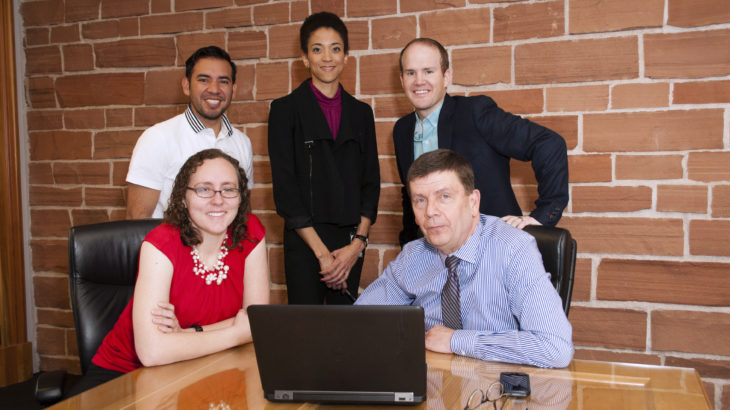Graduate students in the Pierre and Claudette Lassonde New Venture Development Center get more than a life-changing experience. They also work on real technologies with potential to improve the lives of thousands of people across the globe.
Founded in 2001, the New Venture Development Center is one of the premier programs offered by the Lassonde Entrepreneur Institute, an interdisciplinary division of the David Eccles School of Business. Students in the program work closely with the University of Utah’s Technology Venture and Commercialization Office, helping launch startup companies and contributing to the university’s No. 1 ranking for technology commercialization, according to the Milken Institute.
Students from all disciplines – business, science, engineering, law and more – join the program by applying in the spring semester for the following academic year. When they first meet, they learn about current technologies being developed on campus, they select which technologies interest them, and they join teams based on their interests. When formed, the interdisciplinary teams spend a year analyzing the business potential of one or more technologies. The number of technologies they review depends on how quickly their research progresses and what conclusions they reach.
Each group follows a similar process through the year. They start by understanding the technology. Then they complete a series of steps, asking more specific questions as they progress. These steps include determining the market size, understanding customers, reviewing the broader ecosystem, choosing a business structure and developing a development timeline.
The exact steps and order they are completed is up to each team. Navigating this open-ended process mirrors decision-making in the real world and is a big part of the learning opportunity.
“The students learn how to ask questions and how to answer them,” said Troy D’Ambrosio, executive director of the Lassonde Institute. “They also learn how to decide how to deploy a limited number of resources. Time is one of the most limited resources, and they must decide how to spend it.”
By design, each project in different. The team consists of different types of students. The technologies are vastly different. And the way the teams analyze the technologies is different. A closer look at one of the teams helps to illustrate how the program works.
From Eye Pacemaker to Apneic Oxygenation
One of the standout teams participating in the 2016-2017 academic year consisted of: Ben Lopez, MBA student; Marytheresa Ifediba, post-doctoral student; Ryan Coombs, MBA student; and Sarah Broderick, MBA/MS student.
They started the year reviewing an “eye pacemaker” developed by Bala Ambati, a professor of ophthalmology. The device is designed for people with facial paralysis, who have nerve damage in their face and are unable to blink to provide moisture to their eye. The device sends an electrical signal to the area, causing the person to blink.
After understanding the technology, the team looked at the market size and need for the product. The team’s research identified competitive solutions, development costs and target customers.
“We realized it was hard to compete with having something as easy as having your eye shut for two to three months,” Lopez said.
The students presented these finding to the inventor before the end of their first semester and then started working on another technology. This time, they were paired with SickKids, a children’s hospital based on Toronto, Ontario, that approached the Lassonde Institute for help evaluating a new technology.
SickKids asked the students to review a device for apneic oxygenation, or the process of providing oxygen to patients during procedures when they are not breathing, such as anesthesia. The technology is designed to provide more oxygen to the blood, extending the time doctors have to complete the treatment.
An important challenge the student overcame was not knowing exactly what the technology did or what it looked like. The hospital was unable to share those details until a patent was filed. But that didn’t prevent the students from discovering the device had potential. They concluded the market for the oxygenation device was large enough and challenges small enough to recommend moving forward with a commercialization plan.
“The students really came together very quickly as a team,” D’Ambrosio said. “They hadn’t work with each other before this, they communicated well, and they were very diligent and clever.”
Developing the Confidence to Succeed
While the two technologies the students analyzed had little in common, the projects shared the same impact on the team members. By reviewing these technologies, not only did they help direct development on future health-care treatments, they also gained a life-changing experience. Maybe the most important lessons they learned where how to work in an interdisciplinary team and gaining a confidence for learning new technologies and evaluating their potential.
“By going through this process, I feel confident enough now that I can tackle a project no matter if I know it or not,” Lopez said. “You are put into a situation where you have no idea what ‘apneic oxygenation’ is, and in the process of a semester, you learn what that is and the market for that product and come to a conclusion if this is feasible.”
Learn more about the Pierre and Claudette Lassonde New Venture Development Center at lassonde.utah.edu/new-venture-development.



